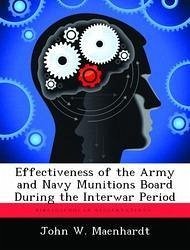In spite of a late entry into World War I, the United States found itself unprepared to adequately equip its expeditionary forces for combat operations in Europe. After the War, Congress passed the National Defense Act of 1920, which tasked the Assistant Secretary of War with establishing a unified procurement program for the services and preparing the country for industrial mobilization in the event of another national conflict. Two years later the Army and Navy Munitions Board (ANMB) was established with the task of providing a unified procurement program for both services. Throughout the interwar period the ANMB focused on preparing the nation for industrial mobilization, which was seen as one of the keys to success on the modern battlefield. The ANMB was instrumental to the development of the industrial mobilization plan, which outlined the total mobilization of the country towards wartime production. The ANMB created these plans with little support from the services or political administrations and in a climate when public sentiment was against U.S. involvement in another European war. When the U.S. did commit itself to the Allied cause in World War II, the industrial mobilization plan was not implemented and the ANMB was marginalized as an organization. However, this is not to say that the ANMB failed in its task. Though the industrial mobilization plan was not implemented, many aspects of the plan were put into operation throughout the war. The planning process served to address many aspects of industrial mobilization that were never even considered before, such as military control of the economy and distribution of resources. Throughout the war the ANMB established itself as a liaison between the services and private industry. The ANMB worked with several other mobilization organizations, including the War Production Board on the allocation of resources and factory development. Though the ANMB did not achieve the mission for which it was created, it did ser








